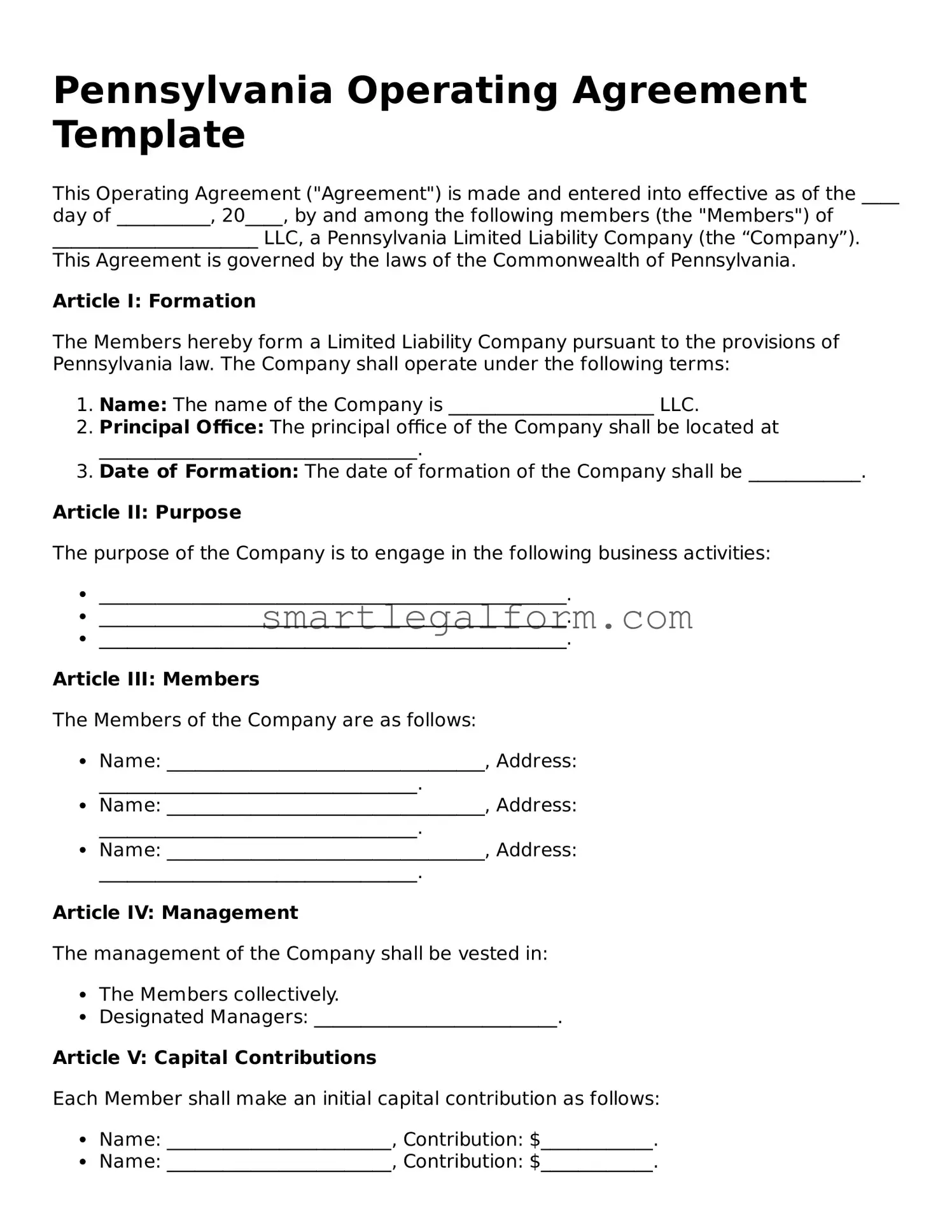Pennsylvania Operating Agreement Template
This Operating Agreement ("Agreement") is made and entered into effective as of the ____ day of __________, 20____, by and among the following members (the "Members") of ______________________ LLC, a Pennsylvania Limited Liability Company (the “Company”). This Agreement is governed by the laws of the Commonwealth of Pennsylvania.
Article I: Formation
The Members hereby form a Limited Liability Company pursuant to the provisions of Pennsylvania law. The Company shall operate under the following terms:
- Name: The name of the Company is ______________________ LLC.
- Principal Office: The principal office of the Company shall be located at __________________________________.
- Date of Formation: The date of formation of the Company shall be ____________.
Article II: Purpose
The purpose of the Company is to engage in the following business activities:
- __________________________________________________.
- __________________________________________________.
- __________________________________________________.
Article III: Members
The Members of the Company are as follows:
- Name: __________________________________, Address: __________________________________.
- Name: __________________________________, Address: __________________________________.
- Name: __________________________________, Address: __________________________________.
Article IV: Management
The management of the Company shall be vested in:
- The Members collectively.
- Designated Managers: __________________________.
Article V: Capital Contributions
Each Member shall make an initial capital contribution as follows:
- Name: ________________________, Contribution: $____________.
- Name: ________________________, Contribution: $____________.
- Name: ________________________, Contribution: $____________.
Article VI: Distributions
Distributions of profits and losses will be allocated among the Members in proportion to their respective percentage interests as follows:
- Name: ________________________, Percentage Interest: __________%.
- Name: ________________________, Percentage Interest: __________%.
- Name: ________________________, Percentage Interest: __________%.
Article VII: Amendments
This Agreement may be amended only by a written agreement signed by all Members.
Article VIII: Miscellaneous
This Agreement constitutes the entire understanding among the Members and supersedes all prior agreements and understandings, whether written or oral, relating to the Company.
IN WITNESS WHEREOF, the Members have executed this Operating Agreement as of the date first written above.
___________________________________
Signature of Member
___________________________________
Signature of Member
___________________________________
Signature of Member
